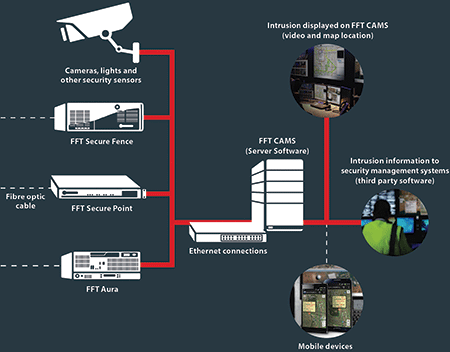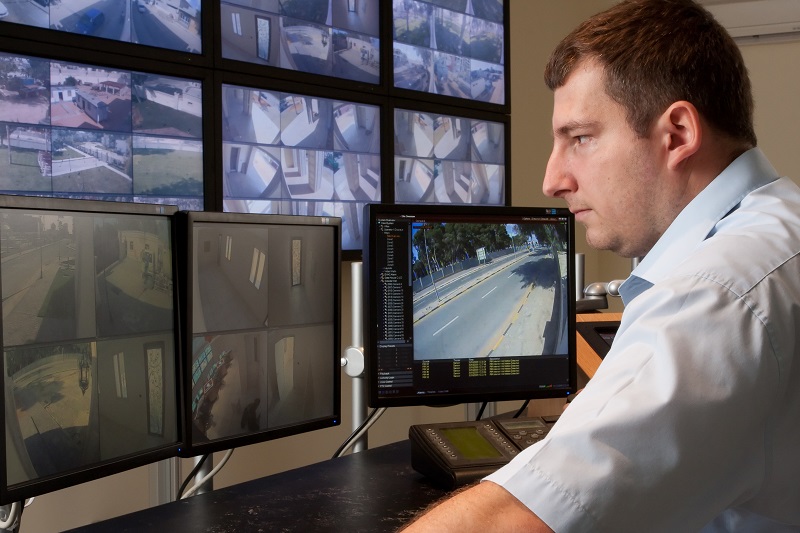Fiber Optic Security System: The Ultimate Solution for Your Business’s Protection Needs
Fiber Optic Security System: The Ultimate Solution for Your Business’s Protection Needs
Blog Article
Secure Your Building With Reliable Fiber Optic Security Solutions
In an age where protection risks are progressively advanced, the requirement for effective security services is critical. Fiber optic protection systems attract attention by offering outstanding integrity and efficiency, leveraging innovative light transmission technology to enhance monitoring capabilities. These systems not just offer resistance to electro-magnetic interference however likewise guarantee long-term expense efficiency through decreased maintenance requirements. Nevertheless, the decision to buy such an option involves mindful factor to consider of various aspects. Understanding the complexities of fiber optic safety and security can brighten the course to guarding your residential or commercial property better. What elements should be explored to optimize your financial investment?
Advantages of Fiber Optic Protection
Fiber optic security services provide a variety of advantages that make them significantly important in today's digital landscape. One of the most significant benefits is their remarkable bandwidth ability, which allows for the transmission of big quantities of information over cross countries without significant signal destruction. This ability is especially useful for security systems that depend on high-def video security and real-time surveillance.
Furthermore, fiber optic cables are inherently more protected than traditional copper wiring. They are unsusceptible to electromagnetic interference, making them less prone to hacking or eavesdropping. This boosted safety is crucial for safeguarding delicate data and maintaining the honesty of surveillance systems.
Furthermore, fiber optics are more sturdy and resistant to environmental factors, such as moisture and temperature level variations, ensuring lasting dependability and reduced maintenance prices. The lightweight nature of fiber optic cords additionally streamlines installment procedures, permitting greater adaptability in system design.
Just How Fiber Optic Systems Job
In modern-day security applications, the procedure of fiber optic systems counts on the concepts of light transmission through flexible glass or plastic fibers. These fibers are created to carry light signals over fars away with very little loss, making them ideal for transmitting information connected to safety tracking. The core of the fiber, bordered by a cladding product, makes certain that light signals continue to be consisted of within the core with a phenomenon called complete inner representation.
When integrated right into safety systems, fiber optic cable televisions can send information from different sensing units, such as cameras, movement detectors, and alarm systems, to a main surveillance terminal. The high bandwidth ability of optical fiber enables the transmission of huge quantities of information concurrently, allowing real-time monitoring and prompt reaction to possible dangers.

Kinds of Fiber Optic Safety And Security Solutions
Various sorts of fiber optic security solutions have actually arised to improve surveillance and security throughout different settings. One famous service is fiber optic border invasion detection systems (PIDS), created to keep an eye on and protect residential property boundaries via the discovery of vibrations and disturbances along fiber optic cords. These systems provide real-time informs, making it possible for timely responses to unauthorized accessibility efforts.
An additional efficient option is fiber optic video security. This technology leverages high-def cams connected through fiber optic cables to transfer video data over long distances without considerable loss of quality. This setup is specifically beneficial in expansive areas, such as flight terminals and industrial websites, where conventional copper cables might falter.
Furthermore, fiber navigate here optic sensors are increasingly utilized for environmental tracking, detecting adjustments in temperature level, stress, or acoustic signals that might show safety violations or hazardous conditions. These sensors provide high sensitivity and accuracy, making them ideal for vital infrastructure security.

Installment and Maintenance Tips
Efficient setup and upkeep of fiber optic safety solutions are important for guaranteeing their ideal performance and long life. Fiber optic wires need to be transmitted securely, avoiding sharp bends or twists that can endanger their integrity.
Throughout setup, it is advisable to carry out complete testing of the system to verify that all components are functioning appropriately. Routine maintenance checks should be scheduled to inspect the fiber optic cords for any type of indications of wear or damages, in addition to to make certain that links continue to be protected. Cleaning the connectors regularly is likewise vital to stop signal read here loss due to dirt or debris.
Furthermore, maintaining an upgraded stock of set up parts and their specs can facilitate easier troubleshooting and upgrades. By adhering to these installment and upkeep suggestions, property owners can optimize the effectiveness of their fiber optic safety and security solutions, making certain a trustworthy defense against prospective risks.
Contrasting Prices and Effectiveness
When reviewing fiber optic safety and security services, recognizing the equilibrium in between costs and efficiency becomes critical (security fibers). Organizations should take into consideration the ahead of time financial investment, continuous upkeep expenses, and the long-lasting worth these systems supply. While fiber optic systems may need a greater first installation price contrasted to typical copper electrical wiring, their resilience and decreased vulnerability to electromagnetic disturbance commonly equate to lower maintenance expenses with time
Effectiveness is another crucial factor; fiber optic safety and security systems use boosted data transmission speeds and improved integrity. They can cover bigger distances without signal degradation, making them optimal for large residential or commercial properties or remote locations. Additionally, the high data transfer ability supports sophisticated security applications, such as high-definition video monitoring and real-time monitoring, which are essential for detailed protection monitoring.
Inevitably, the selection in between price and efficiency should be guided by specific safety and security demands and risk evaluations. Organizations should examine their unique demands, thinking about elements like residential property size, security threats, and technical advancements. By performing a detailed cost-benefit evaluation, stakeholders can make enlightened decisions that align with their safety goals while guaranteeing a sound investment in fiber optic modern technology.
Final Thought
Finally, fiber optic safety and security options provide significant advantages in regards to efficiency, dependability, and immunity to ecological interferences. These systems improve surveillance abilities and border safety and security, making them a reliable selection for comprehensive protection. Preliminary installment expenses might be greater, the long-term benefits, including lowered upkeep and superior capability, warrant the financial investment. Ultimately, the adoption of fiber optic modern technology stands for a forward-thinking method to securing homes versus progressing safety risks.
Report this page